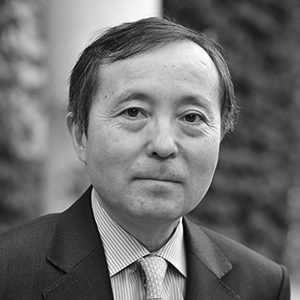
IESE Insight
Inamori management philosophy: putting faith in employees
Create value for society and help people realize their potential: Kazuo Inamori’s management philosophy, an alternative to profit-maximization only.
When Kazuo Inamori, founder of the Japanese ceramics and electronics company Kyocera, passed away in 2022, many obituaries appeared around the globe recounting his influential employee-centric management philosophy. A tribute in the Financial Times summarized: “Long before stakeholder capitalism and the need to serve employees along with investors became vogue in the west, Inamori’s management philosophy had centred on his belief that companies should focus on the livelihood and wellbeing of employees instead of simply pursuing profits.”
IESE collaborator Kimio Kase is the co-author (with Eugene Choi and Ikujiro Nonaka) of a timely reflection on Inamori’s influence, titled Dr Kazuo Inamori’s Management Praxis and Philosophy: A Response to the Profit-Maximisation Paradigm. Here he introduces readers to his 2022 book.
By Kimio Kase
Back in the 1980s, the creed of the Business Policy course at IESE was that firms exist to create value for society and to help employees realize their full potential. Professors Antonio Valero and José Luis Lucas wrote a classic textbook on business policy that became a major reference work, promoting a structure of intrinsic and transcendent motivations.
Since that time, however, there has been a distinctly Porterian (as in Michael E.) paradigm shift. Although there are, of course, exceptions, such as the Toyota Production System, profit-maximization has largely become the order of the day.
This book is an endeavor to reconcile the ideas of Valero and Lucas within the prevailing profit-maximization paradigm, using the theories of Dr. Kazuo Inamori, the founder of Kyocera, whose Management Philosophy, IMP, Valero and Lucas had identified as a way to bridge the gap between these two opposing visions of business.
IMP is predicated on a two-tier structure:
- The first tier is hypostasis — a credence or values system, which, in the case of Kyocera, was largely inspired by Dr. Inamori’s formative experience of having suffered a life-threatening illness, alongside the influence of Samurai Stoicism and Zen Buddhism, all of which moved him to relativize material values in favor of a life of purpose, similar to the teleological view elaborated in Plato’s Phaedo.
- The second tier is substantiation — a set of rules for behavioral and financial management that Dr. Inamori considered crucial to achieving hypostasis. To this end, he designed the Amoeba Management System or AMS, in which the company is divided into “amoeba units,” each of which is responsible for its own profit and losses. In this way, the profit motive is passed down to the lowest management echelons.
The amoeba unit’s performance is measured by the value added (VA):
[Sales — (costs and expenses) / (total no. of hours worked by the members of amoeba)]
The particularity of this measurement indicator consists of the following:
- The cost section includes the interests of capital cost and depreciation of machinery, but it excludes the labor costs of the amoeba members. The rationale behind this is that, if labor costs were included in an amoeba’s expenses, then the profitability of an amoeba would depend on the wage level of its members. People might focus on reducing labor costs rather than improving the company and overall operations.
- The more hours amoeba members work on a particular project, the lower the VA, thereby encouraging members to be highly disciplined in terms of time allocation.
- Costs tend to be kept to a minimum. Since each unit is responsible for its own spending, with a direct effect on the VA of the team, new machines are only acquired if strictly unavoidable, and borrowing is frowned upon.
The way of managing behavior and accounting, in contrast to alternative systems based on input and output, mirrors the practices of certain religious orders, such as St. Ignatius of Loyola of the Society of Jesus and Master Dogen of the Soto School of Zen. These leaders also believed that ideas without practice are worthless, i.e., hypostasis can only occur with adequate systems of implementation. Some of their practice-oriented rules may now seem strange to us, such as Dogen’s instructions on how to use a toothpick to brush one’s teeth or Ignatius’ “spiritual exercises” that novices to his order were obliged to undergo, but the underlying idea is that only when bodily sensorial organs are employed, and knowledge is embodied, can true learning occur.
IMP can sometimes seem controversial to Western researchers today, who may consider that it puts too much pressure on low-level managers. The managers from Kyocera we interviewed, however, felt that they have had a good life, and, although they may have sacrificed outlandishly high salaries at the time, they now enjoy the fruits of the employee shareholding program that was started in the early stages of Kyocera and which provides them with a stable, sustainable income to this day.

